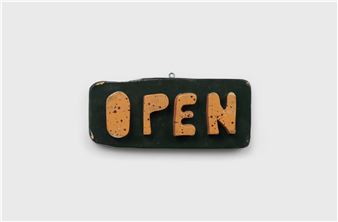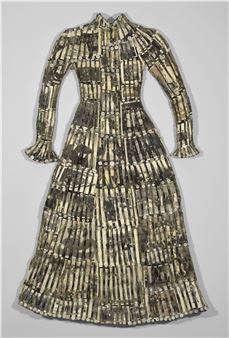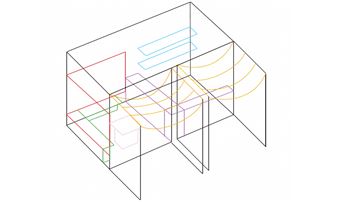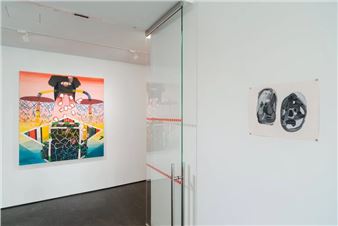Landscapes of Fear
International Waters presents Landscapes of Fear, a group exhibition exploring how fear materializes within our environments, shaping the spaces we inhabit and influencing our interactions with them.
In 1884 at the London Institute, John Ruskin delivered two lectures which would later be titled The Storm-Cloud of the Nineteenth Century, offering a critique of the atmospheric and moral decline of England, as perceived through his detailed observations of the sky. In his art criticism and philosophy, Ruskin defined the artist as an instrument of perception, attuned to the structures and meanings of the surrounding environment — and vulnerable to the environment’s corruption. In his observations of the sky, what Ruskin confronted was not a mere shift in weather, but rather the collapse of a coherent natural order under the conditions of industrialization. As new forms of labor severed human experience from the environment, the surrounding landscape, once embodying purity and the sublime, degraded into a formless and polluted field. As the environment deteriorated, so too did the artist's faculty of representation, mirroring a broader erosion of aesthetic sensibility and the social frameworks of daily life.
For Ruskin, the collapse of the natural world stripped the artist of perceptual agency, immersing them in an environment where the boundary between nature and artifice had dissolved. As the landscape's coherence unraveled, it transformed into a terrain marked by psychic disruption and material change. This disintegration of natural order revealed how fear organizes space, imposing fragmentation and instability onto the very ground of experience. That dynamic has only deepened with time, expanding into the digital, political, and ecological systems of the present — environments saturated not with soot but with surveillance, displacement, and accelerating collapse.
In the text that lends its title to this exhibition, Yi-Fu Tuan describes how fear extends outward into space, conditioning pathways and territories that frame how bodies inhabit the world. While Ruskin’s storm-cloud was a symptom of material and moral degeneration, the contemporary storm-cloud is diffuse, embedded within the infrastructures that mediate perception itself. Within this unsettled field, the artist is again positioned as both instrument and respondent, grappling with landscapes that are no longer stable grounds for meaning.
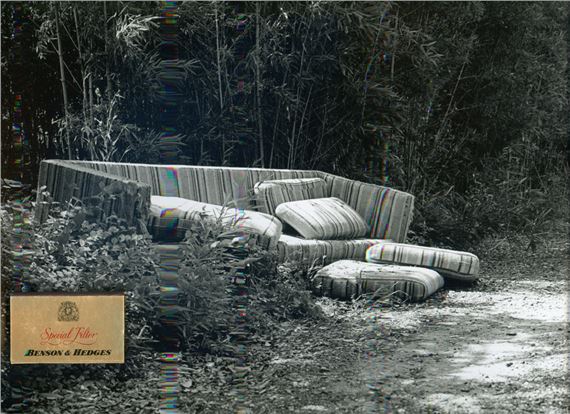
Recommended for you
International Waters presents Landscapes of Fear, a group exhibition exploring how fear materializes within our environments, shaping the spaces we inhabit and influencing our interactions with them.
In 1884 at the London Institute, John Ruskin delivered two lectures which would later be titled The Storm-Cloud of the Nineteenth Century, offering a critique of the atmospheric and moral decline of England, as perceived through his detailed observations of the sky. In his art criticism and philosophy, Ruskin defined the artist as an instrument of perception, attuned to the structures and meanings of the surrounding environment — and vulnerable to the environment’s corruption. In his observations of the sky, what Ruskin confronted was not a mere shift in weather, but rather the collapse of a coherent natural order under the conditions of industrialization. As new forms of labor severed human experience from the environment, the surrounding landscape, once embodying purity and the sublime, degraded into a formless and polluted field. As the environment deteriorated, so too did the artist's faculty of representation, mirroring a broader erosion of aesthetic sensibility and the social frameworks of daily life.
For Ruskin, the collapse of the natural world stripped the artist of perceptual agency, immersing them in an environment where the boundary between nature and artifice had dissolved. As the landscape's coherence unraveled, it transformed into a terrain marked by psychic disruption and material change. This disintegration of natural order revealed how fear organizes space, imposing fragmentation and instability onto the very ground of experience. That dynamic has only deepened with time, expanding into the digital, political, and ecological systems of the present — environments saturated not with soot but with surveillance, displacement, and accelerating collapse.
In the text that lends its title to this exhibition, Yi-Fu Tuan describes how fear extends outward into space, conditioning pathways and territories that frame how bodies inhabit the world. While Ruskin’s storm-cloud was a symptom of material and moral degeneration, the contemporary storm-cloud is diffuse, embedded within the infrastructures that mediate perception itself. Within this unsettled field, the artist is again positioned as both instrument and respondent, grappling with landscapes that are no longer stable grounds for meaning.
Artists on show
- Andre Yvon
- Andy Kincaid
- Brandi Twilley
- Bruno Smith
- Bryce Kroll
- Cait Porter
- Carlos Rigau
- Chang Sujung
- Charlotte Van der Borght
- Daniel Boccato
- David Bordett
- Greg Carideo
- Jason Murphy
- Jeff Williams
- Jen Mazza
- Lee Seung Min
- Lino Bernabe
- Lucia Love
- Marie Lorenz
- Nate Heiges
- Nicholas Sullivan
- Nick Irzyk
- Olivia Drusin
- Patrick Carlin Mohundro
- Philip Hinge
- Pooneh Maghazehe
- Quincy Langford
- Rudolf Samohejl
- Shaina Tabak
- Shaun Krupa
- Tuguldur Yondonjamts

 ARTISTS
ARTISTS







